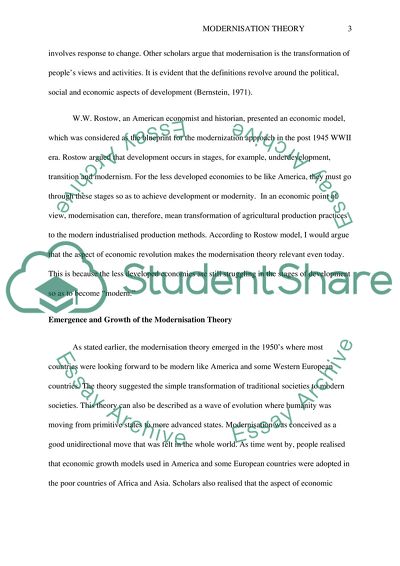Cite this document
(The Development of the Modernisation Theory Coursework Example | Topics and Well Written Essays - 2500 words, n.d.)
The Development of the Modernisation Theory Coursework Example | Topics and Well Written Essays - 2500 words. https://studentshare.org/politics/1862256-the-question-of-the-essay-is-in-what-ways-is-modernisation-theory-still-relevant
The Development of the Modernisation Theory Coursework Example | Topics and Well Written Essays - 2500 words. https://studentshare.org/politics/1862256-the-question-of-the-essay-is-in-what-ways-is-modernisation-theory-still-relevant
(The Development of the Modernisation Theory Coursework Example | Topics and Well Written Essays - 2500 Words)
The Development of the Modernisation Theory Coursework Example | Topics and Well Written Essays - 2500 Words. https://studentshare.org/politics/1862256-the-question-of-the-essay-is-in-what-ways-is-modernisation-theory-still-relevant.
The Development of the Modernisation Theory Coursework Example | Topics and Well Written Essays - 2500 Words. https://studentshare.org/politics/1862256-the-question-of-the-essay-is-in-what-ways-is-modernisation-theory-still-relevant.
“The Development of the Modernisation Theory Coursework Example | Topics and Well Written Essays - 2500 Words”. https://studentshare.org/politics/1862256-the-question-of-the-essay-is-in-what-ways-is-modernisation-theory-still-relevant.


